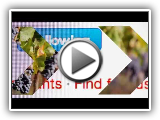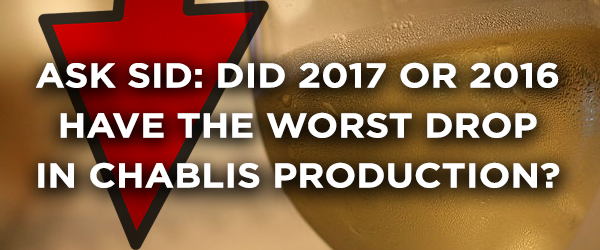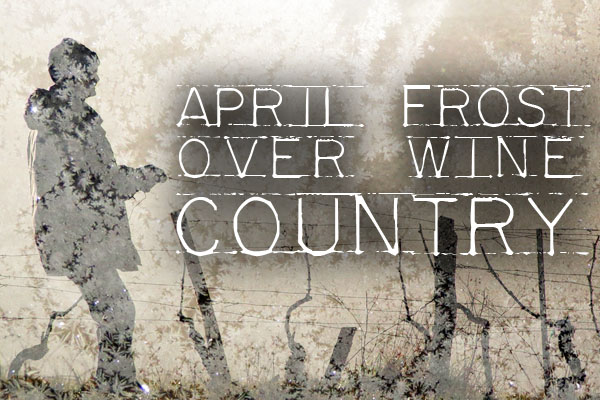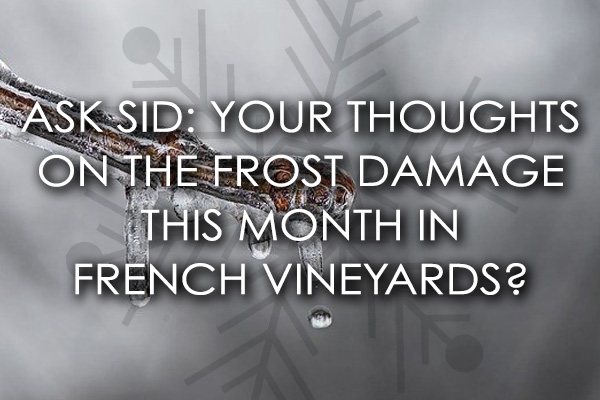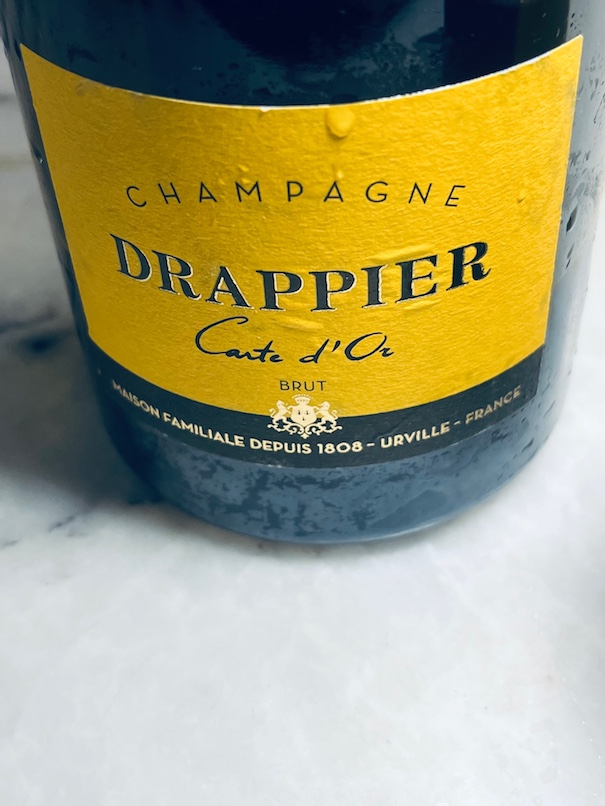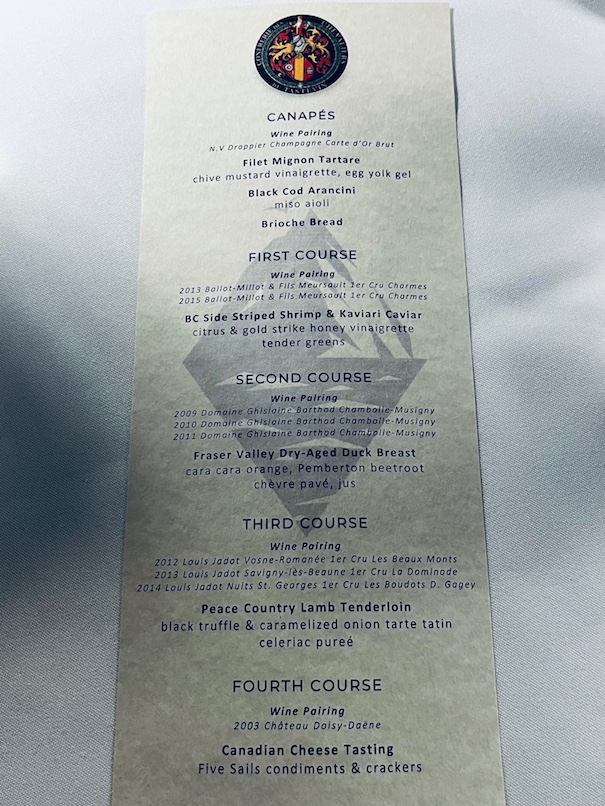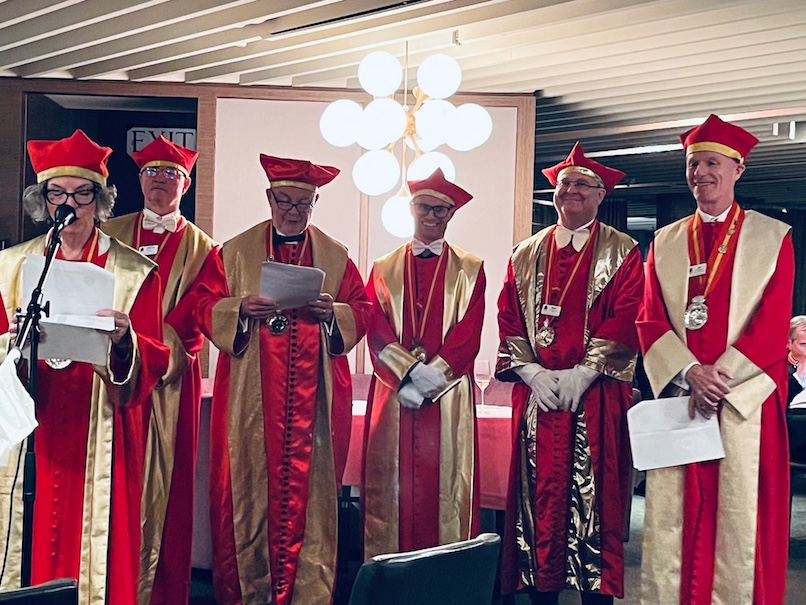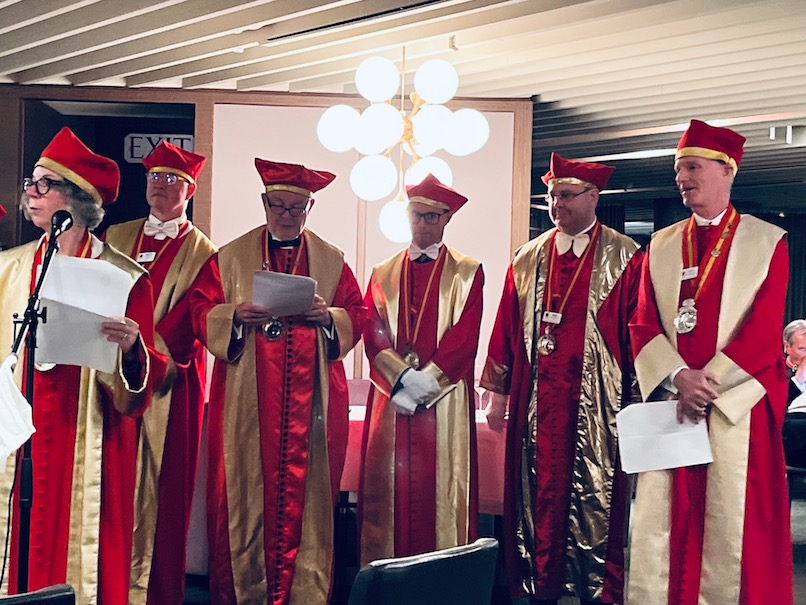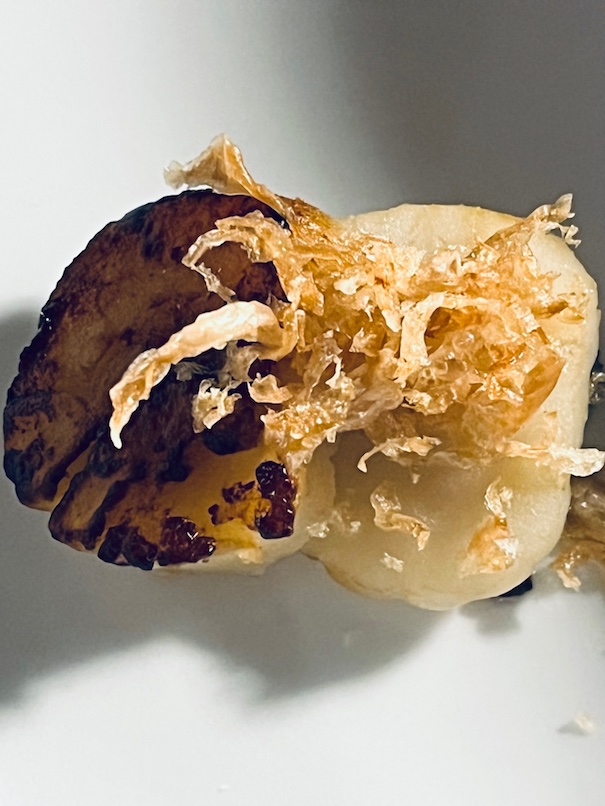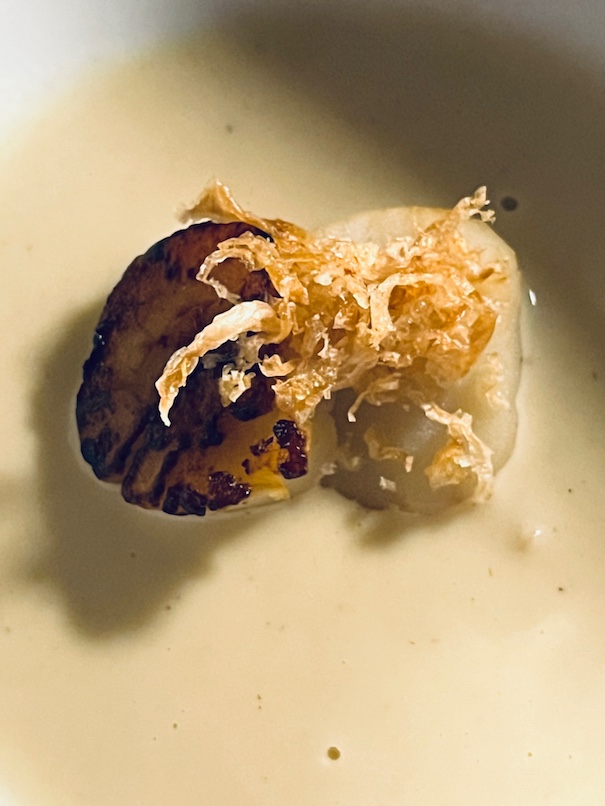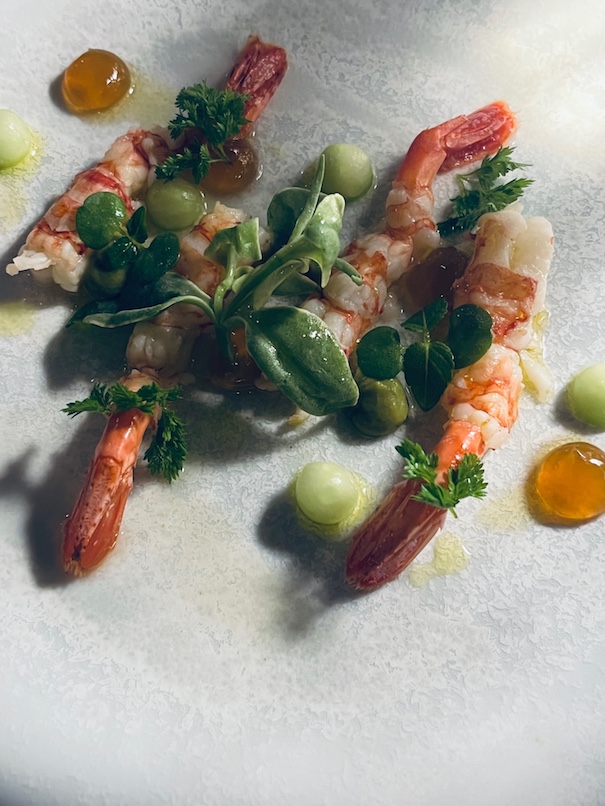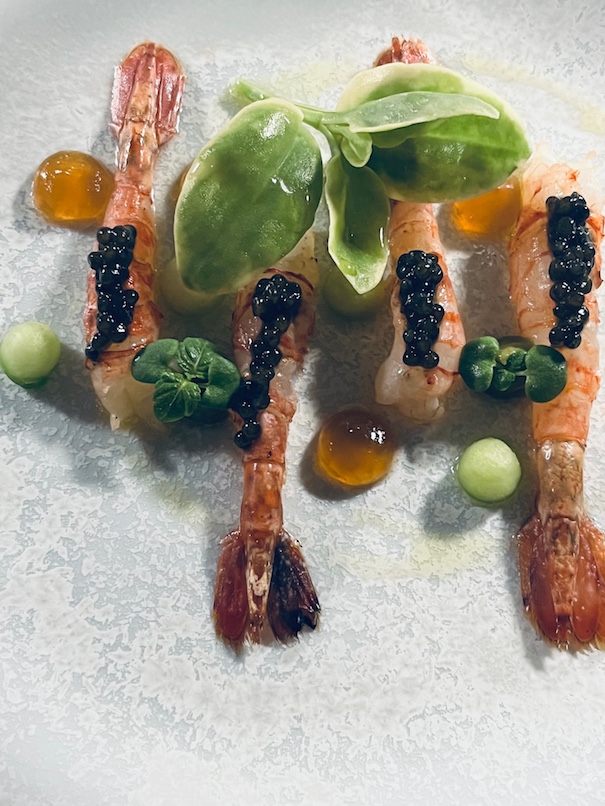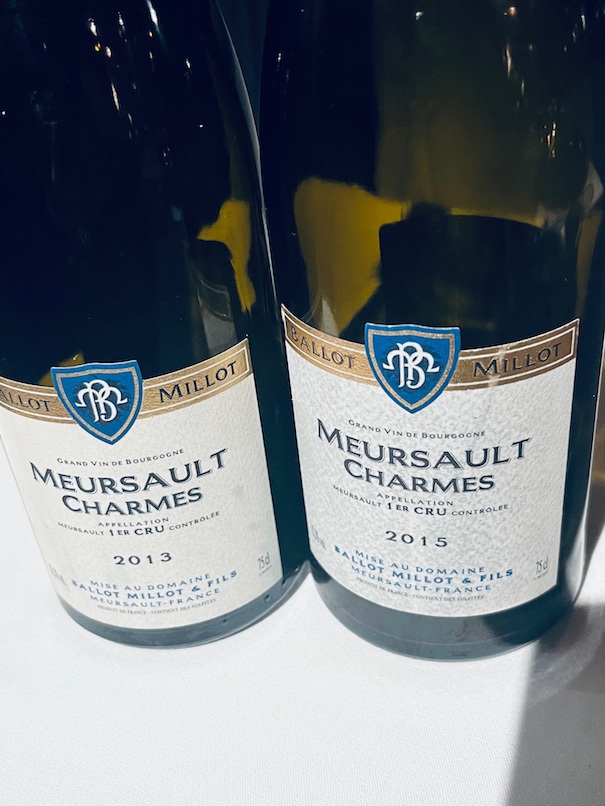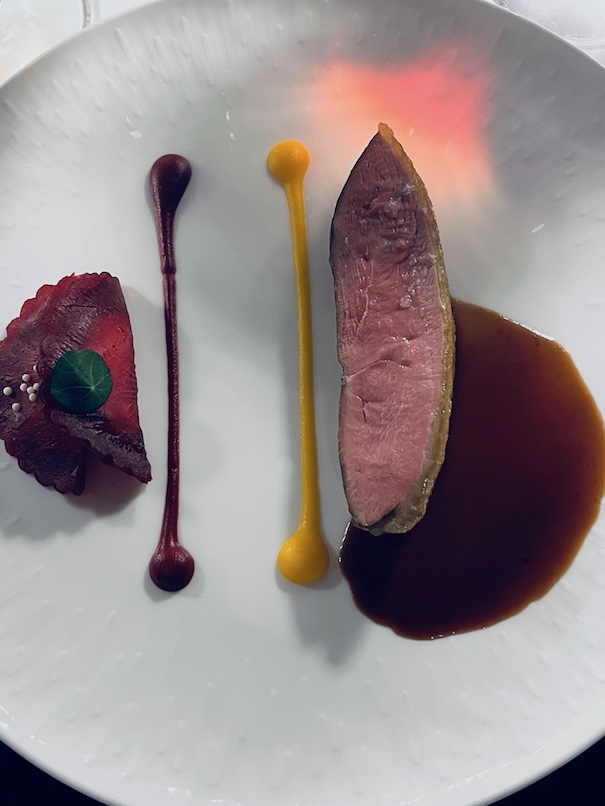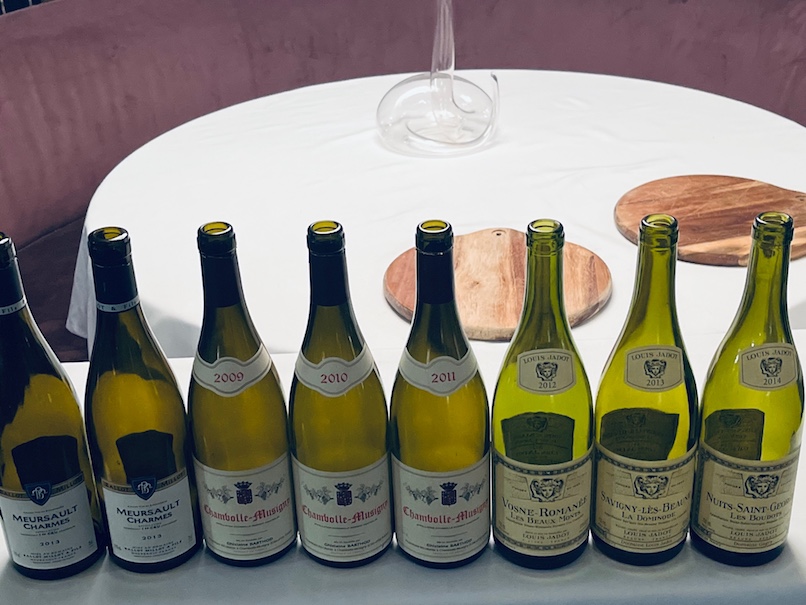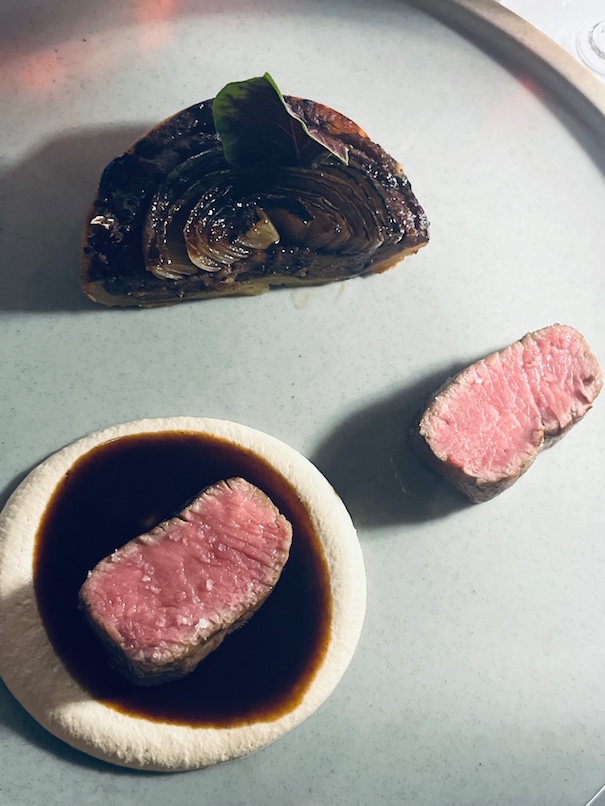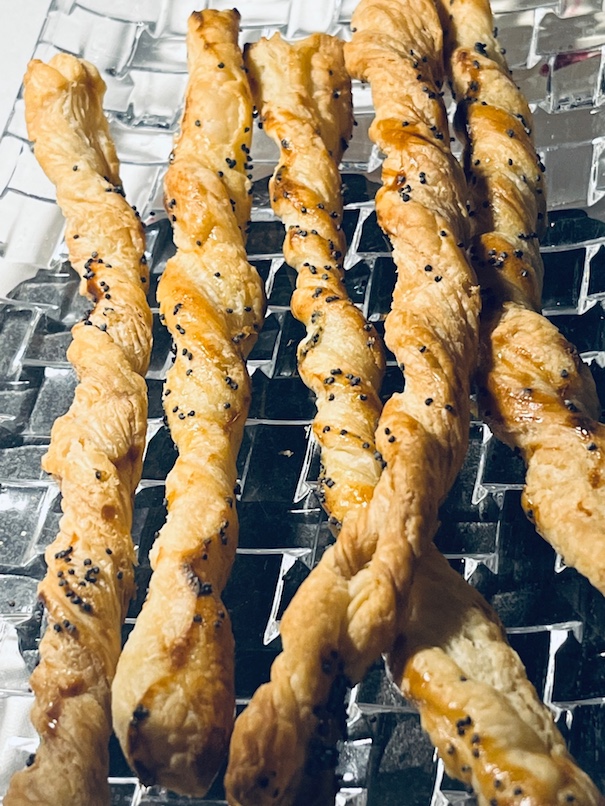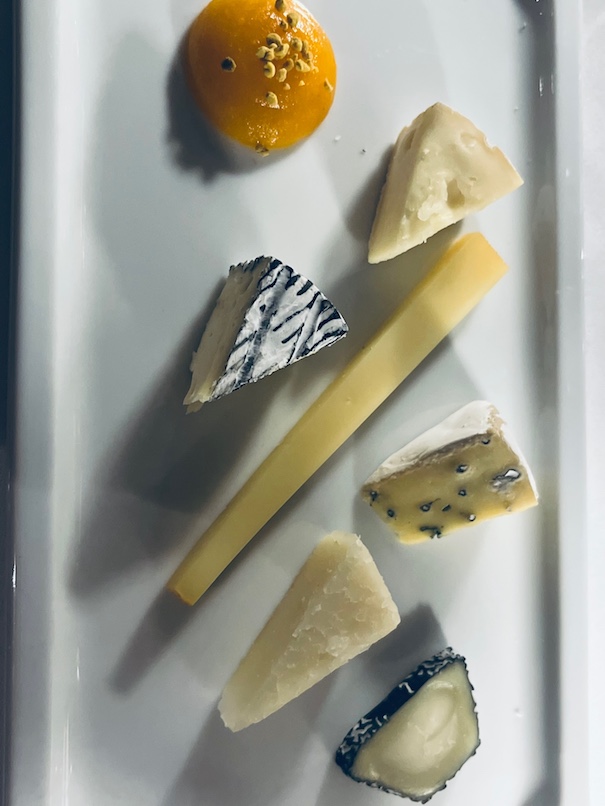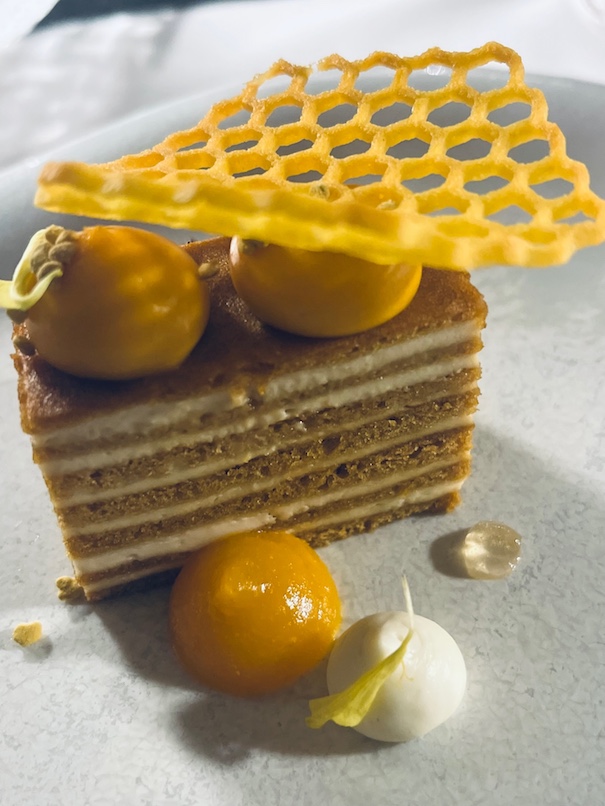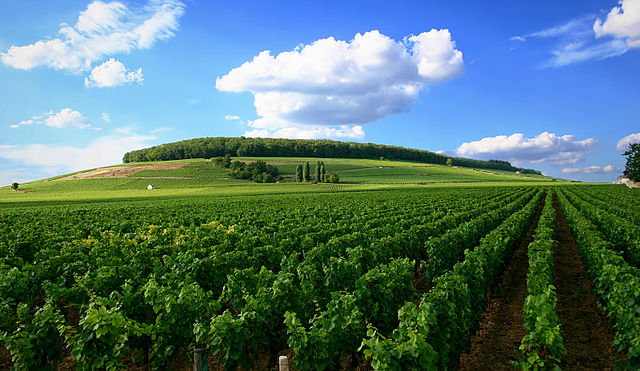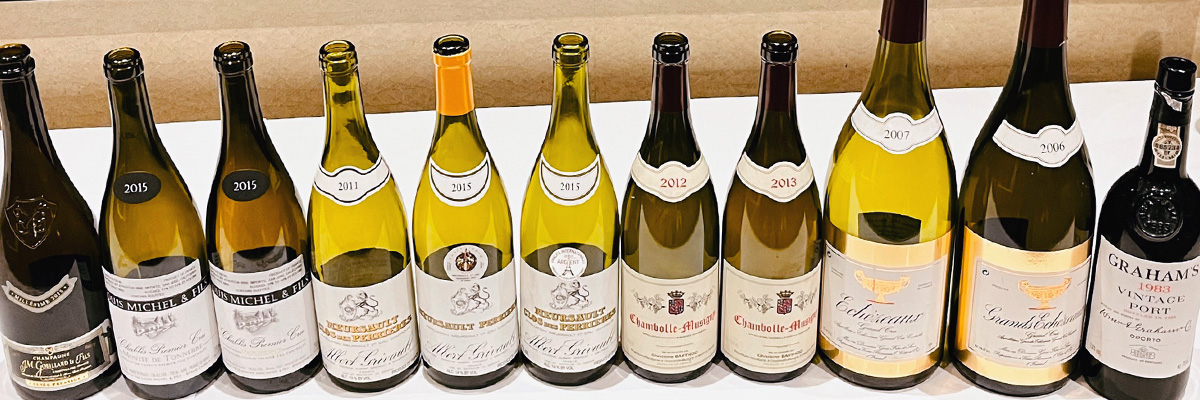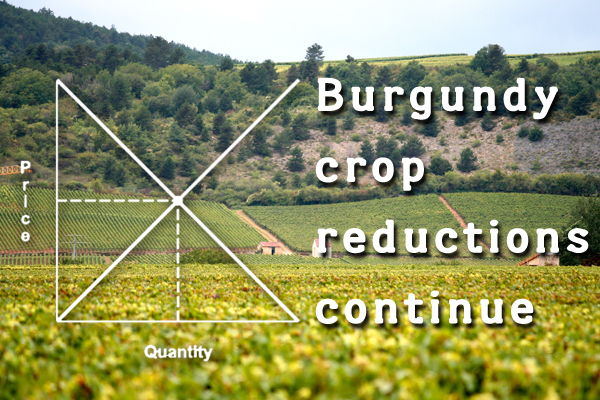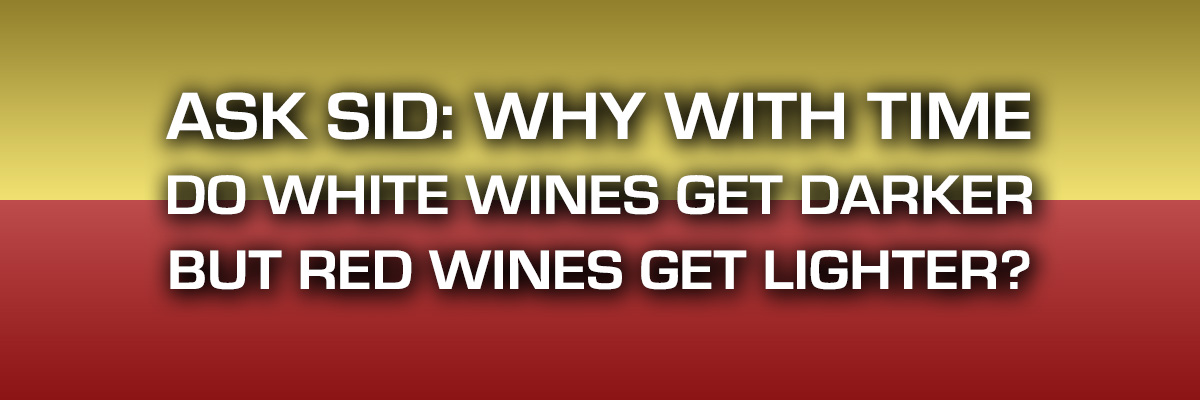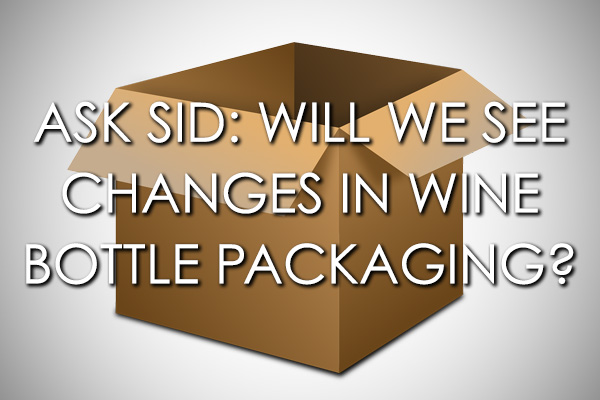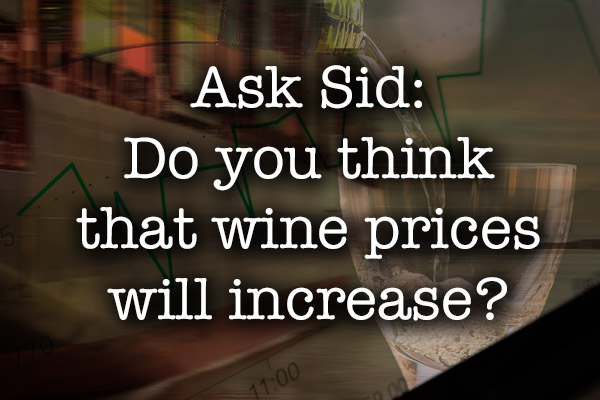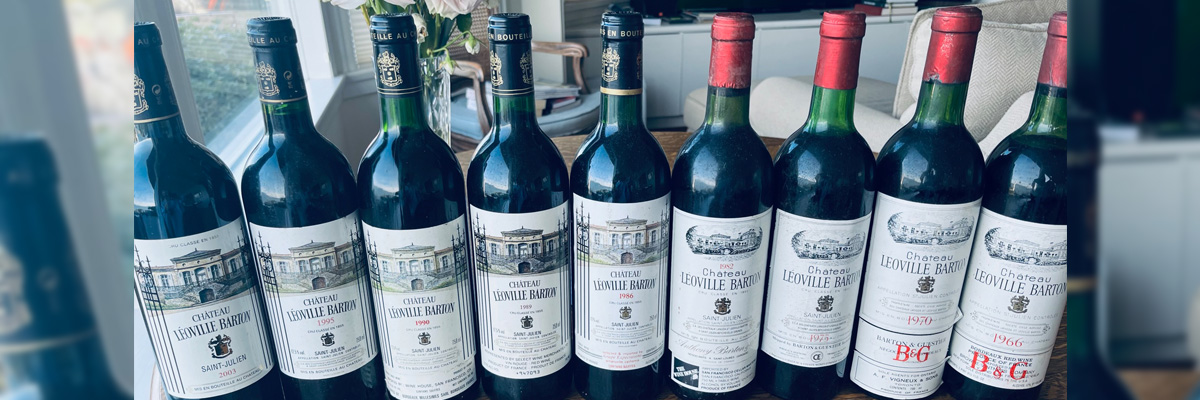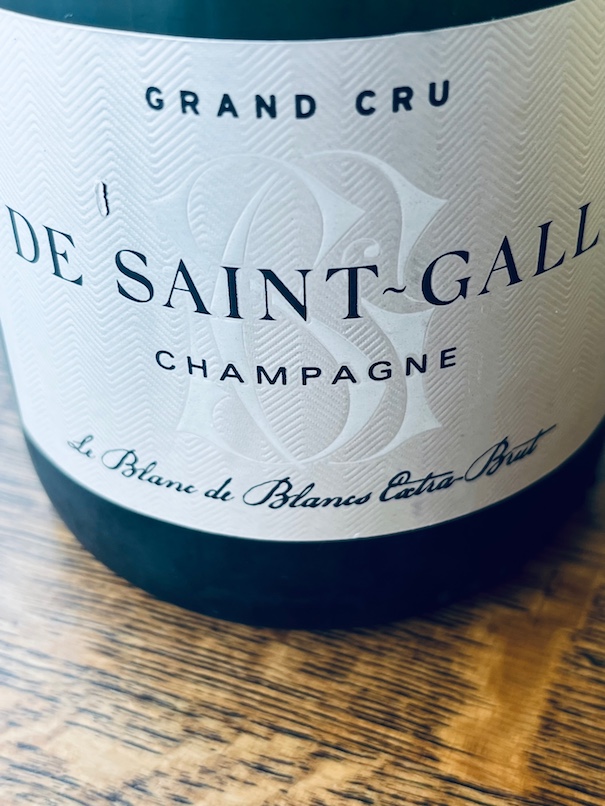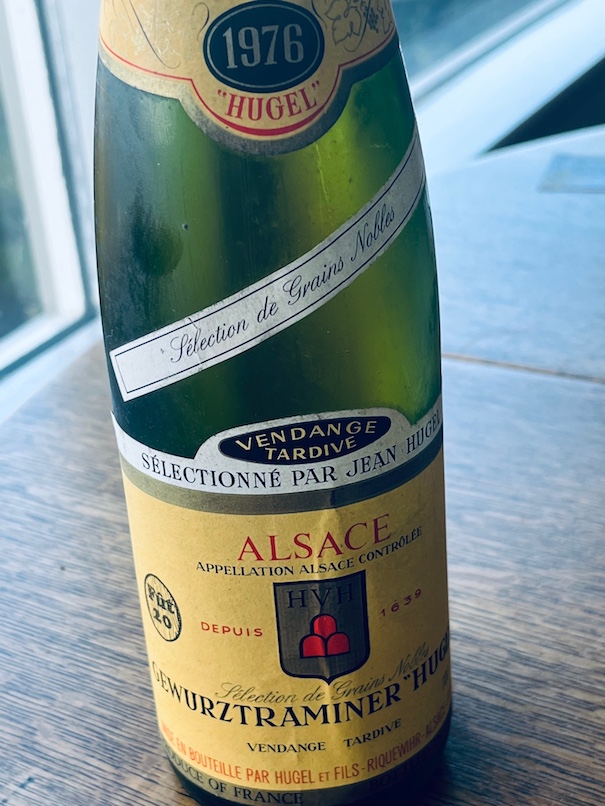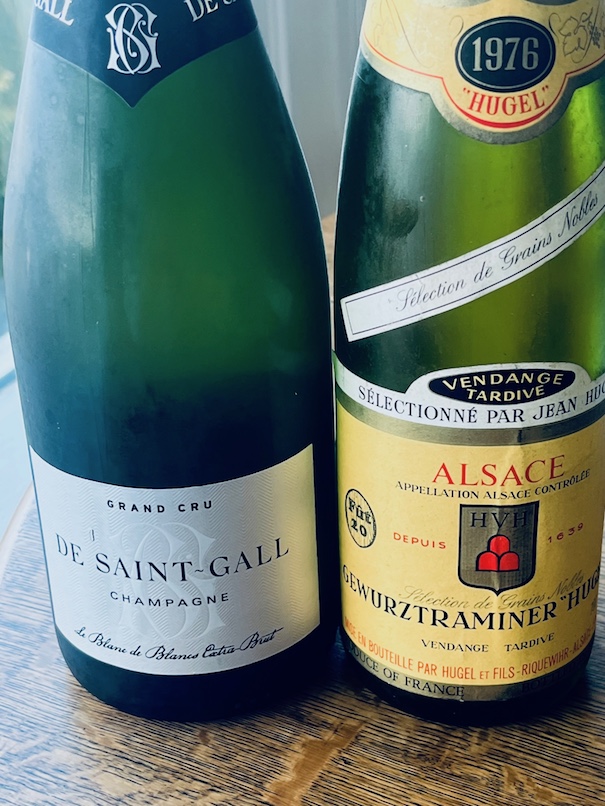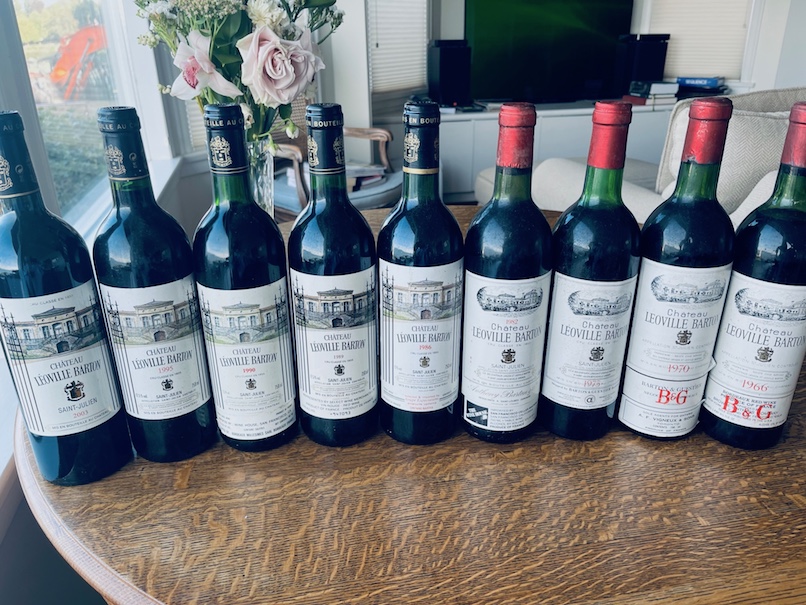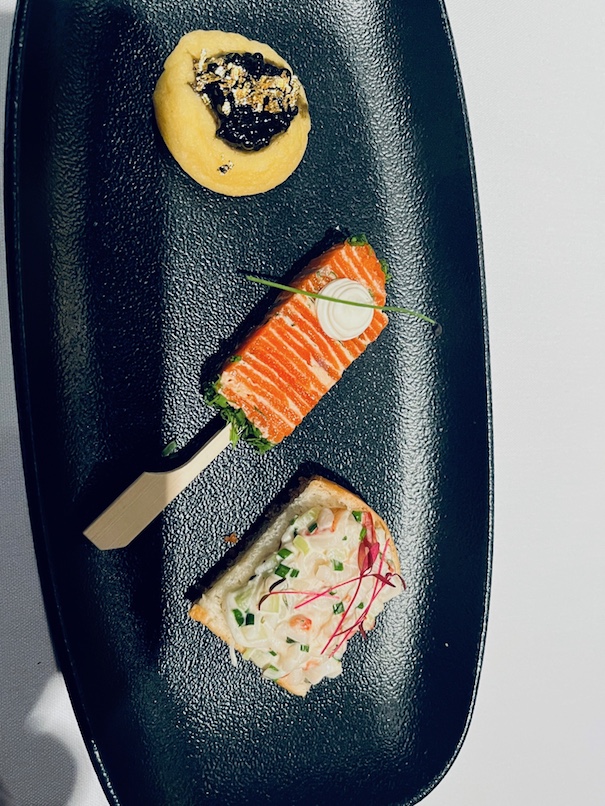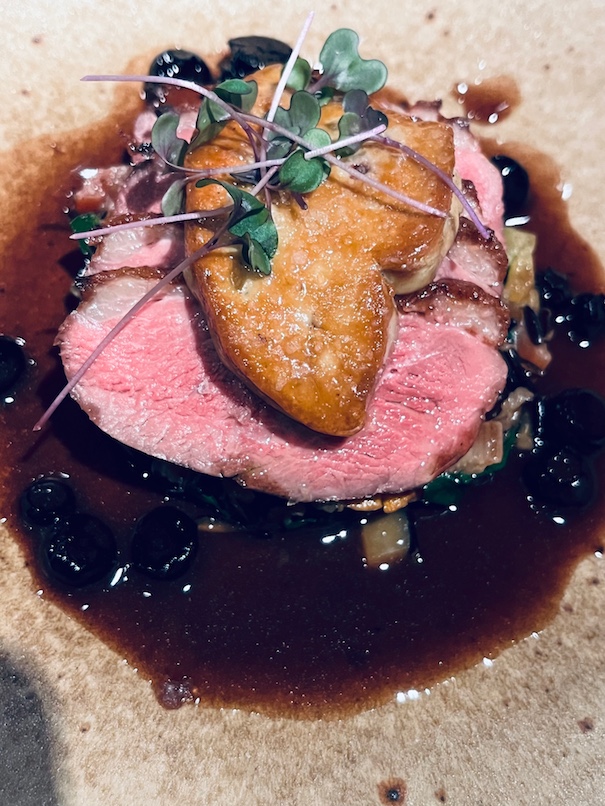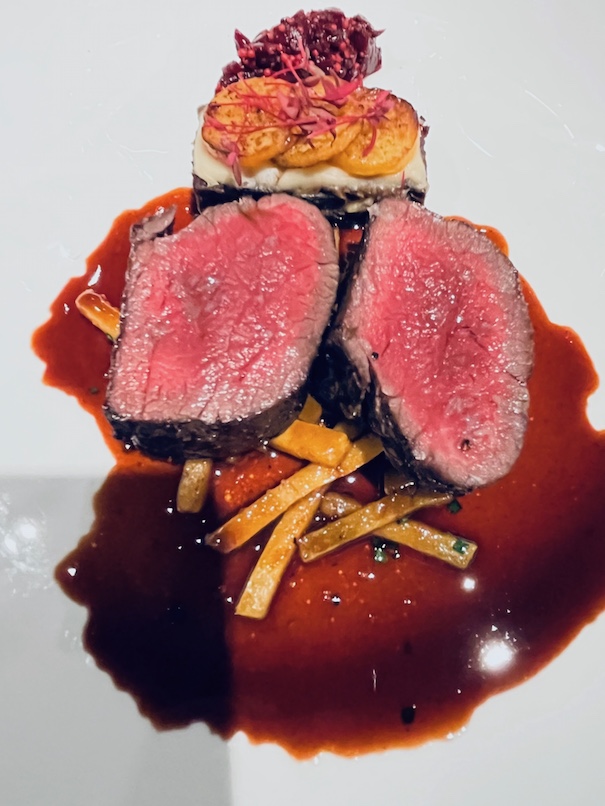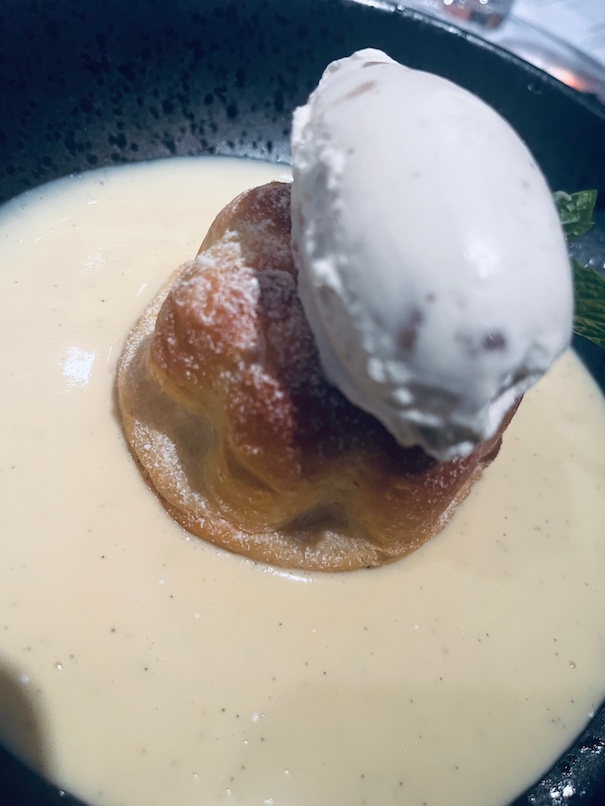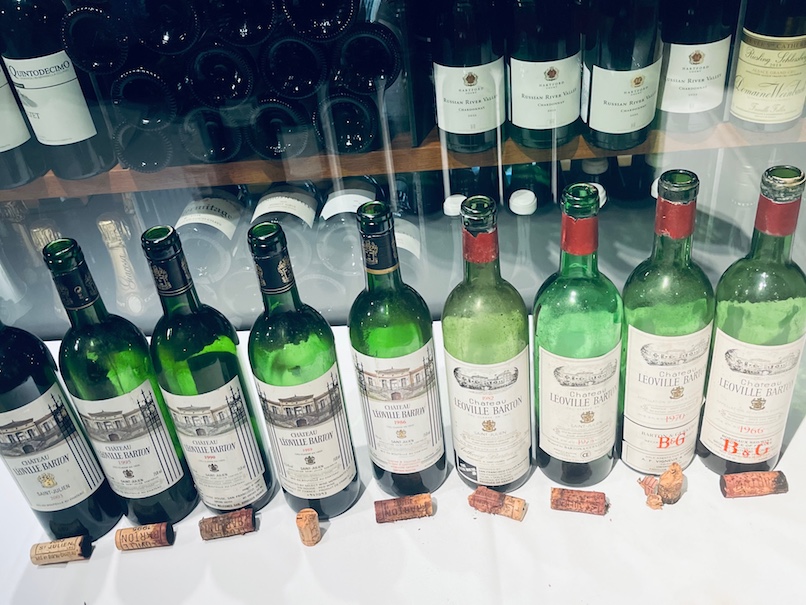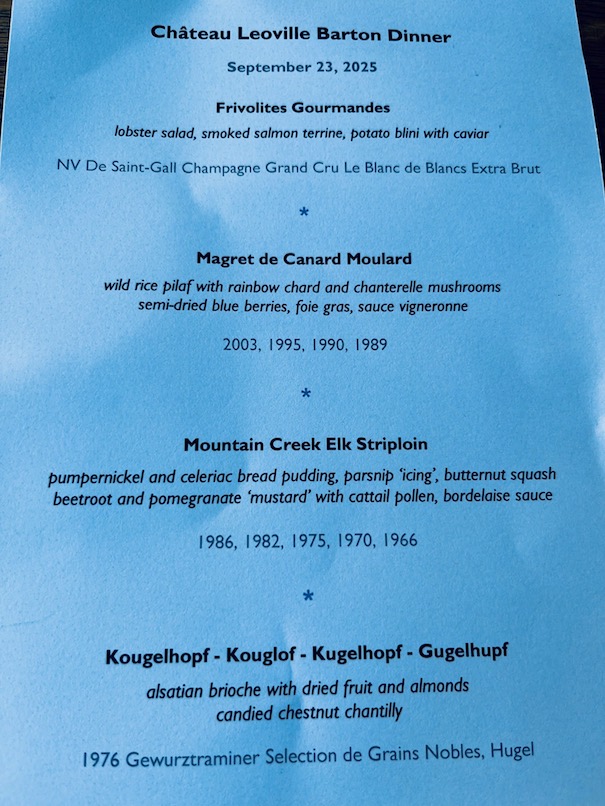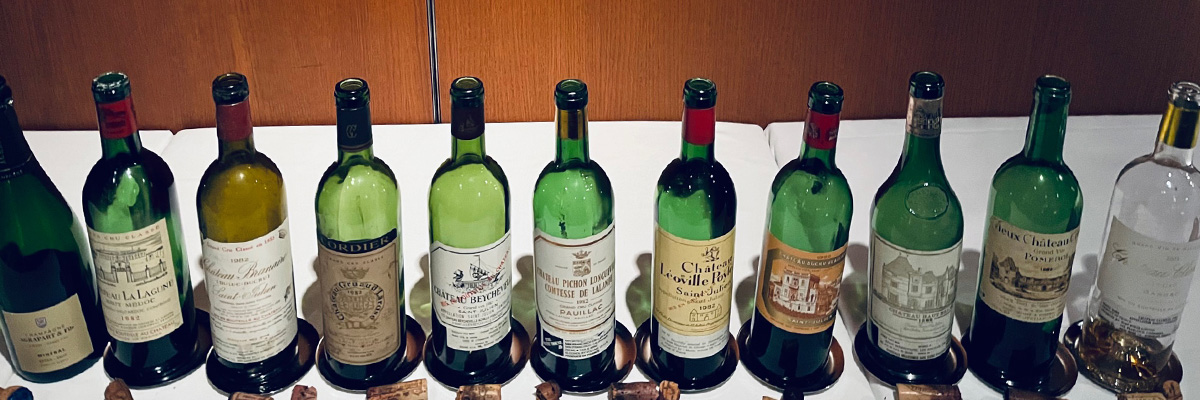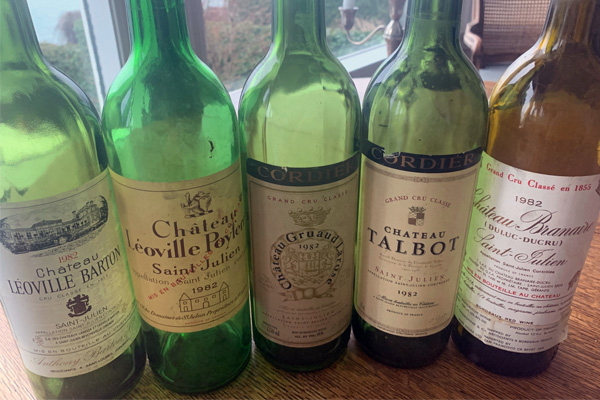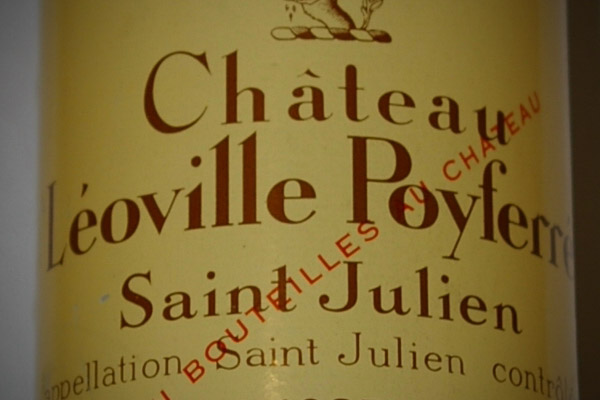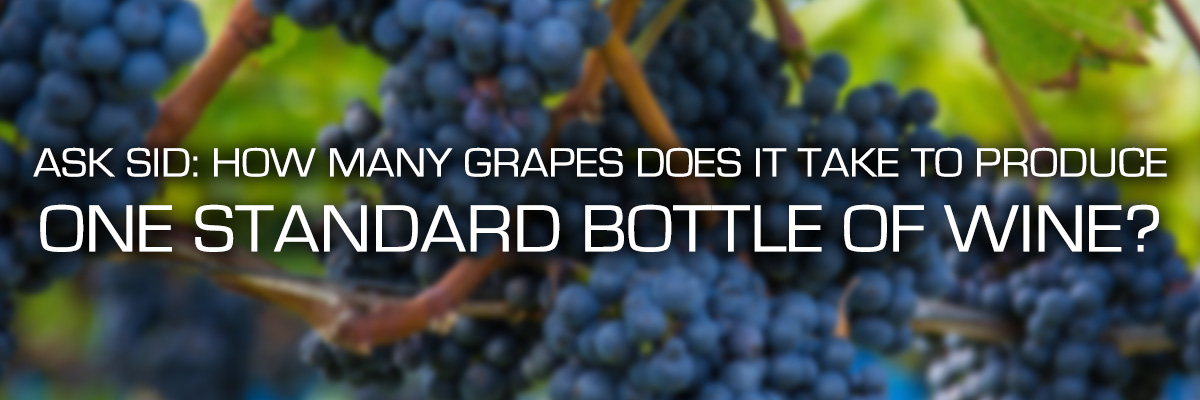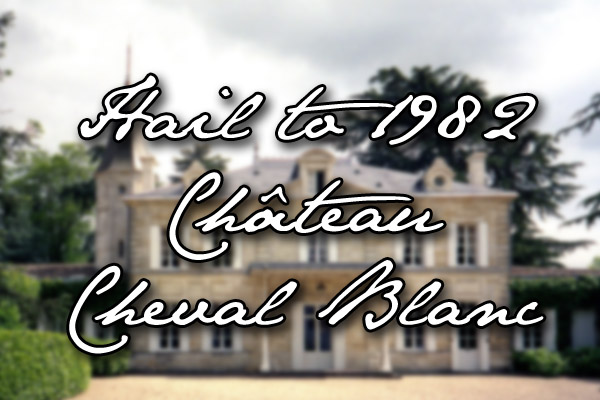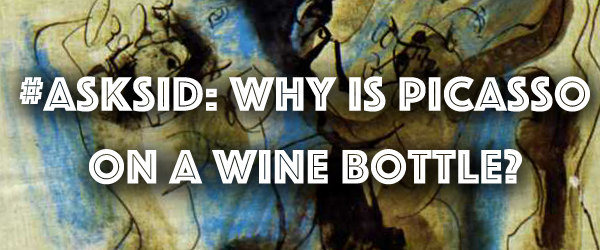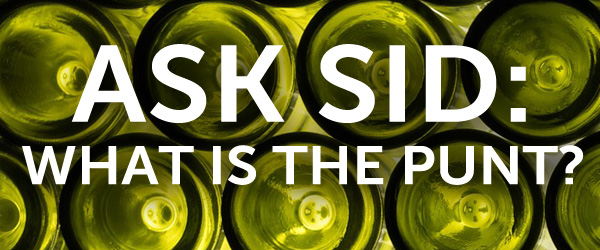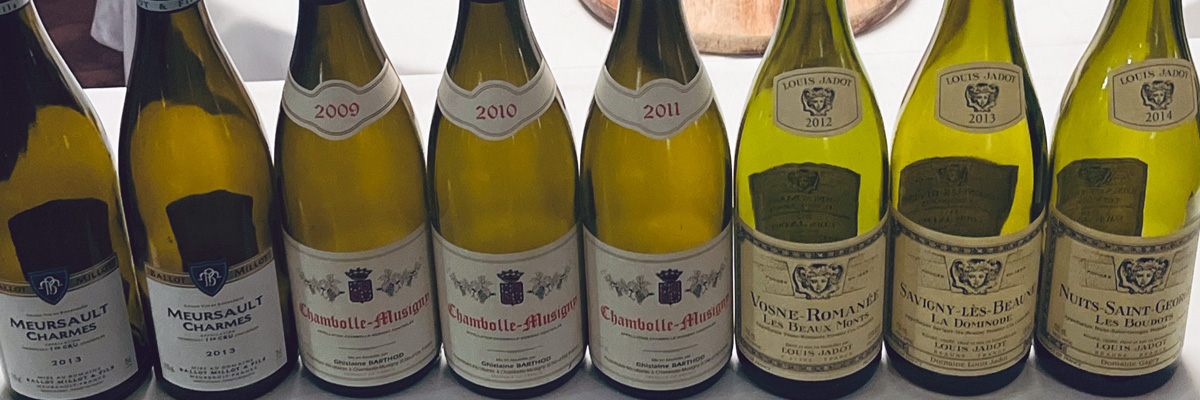
All us oenophiles enjoy the opportunity to learn more about wine. This is helped out a lot when the organizer of an event chooses wines with something in common but also allows for comparisons.
We are fortunate with the Vancouver Branch of the Confrérie des Chevaliers du Tastevin to have Cellarmaster Blair Curtis and his team acquire, organize, and select excellent groupings from the cellar inventory for our events.
On September 30, 2025 was another example of that for a Black Tie Induction stellar dinner by talented Chef Alex Kim and brigade at Five Sails Restaurant featuring three well organized most interesting flights of Burgundy.
We started with an aperitif of DRAPPIER CARTE D’OR BRUT from a major family Aube producer in Urville at the heart of the Cote des Bar since 1808 claiming to be the first Carbon Neutral Champagne House. Grown on southern vineyards with a sustainable and organic ethos of Jurassic Kimmeridgian limestone and chalk (similar to Chablis) they blend 80% Pinot Noir, 15% Chardonnay and 5% Meunier using 40% Reserve wines with a liqueur matured in wood for 6.5 g/l dosage on disgorgement 2/19. Shows rich full bodied spicy notes with some creamy complex character from six years of bottle age suitably paired with hors d’oeuvre plus exquisite bonus scallop course. We finished with 2003 CHATEAU DOISY-DAENE BARSAC planted 86/14 Semillon/Sauvignon Blanc with more forwardly ripe soft sweet syrupy notes than usual from this hotter early picked vintage.
The three flights of Burgundy provided lots of insights into three producers and lots of vintages to compare – especially six consecutive red Burgundy years from 2009 to 2014 inclusive. Some thoughts:
First Flight White Burgundy BALLOT-MILLOT MEURSAULT CHARMES 2015 & 2013 with shrimp & caviar. Underrated family producer with older vines using organic practices with Raymond, Philippe, and since 2000 Charles Ballot producing improved quality with lovely purity restrained oak treatment with no battonage and less intervention in vinification. Both vintages showed fresh precise definition with 2015 warmer year of richer fatter fuller weight concentration while 2013 older but even more fresh lively exuberance and structured complex elegance from a cooler year which your scribe preferred. Reminds me of their excellent 2017 Meursaults – especially the older vines in Genevrieres. Like the intensity and length of pure flavours they are obtaining from their well situated vineyards. The Charmes plot is in the upper part with Lafon. Top producer to follow.
Second Flight featured 3 vintages of CHAMBOLLE MUSIGNY village wine from DOMAINE GHISLAINE BARTHOD. Gaston Barthod from the Jura married into the Noellat family and daughter Ghislaine (married to Louis Boillot) apprenticed with them in the eighties and eventually developed her own respected Domaine. In the old days they admired in Chambolle Musigny only Les Charmes Premier Cru as best and other holdings were not promoted. Now they are advocates of Les Cras, Les Fuees and many other Premier Crus. Fun to compare 2011, 2010, and 2009 of just the AC wine from nine parcels in the region that is a fav of your scribe for charm, grace, elegance, and delicate sensuous textures from more limestone soils.
2011: Palest colour. Open nose and forwardly giving from earlier picking. Lovely alive and stylish but a drier lighter thinner peppery finish. Improves when enjoyed with this outstanding duck breast course.
2010: Brightest clear dark red look from a smaller crop. Sensual gentle classic energy, balance, with noble intensity. Brilliant refined example of the outstanding terroir with so much charm. Excellent future.
2009: Darkest deepest one. Rich big fruit is much sweeter, soft and rounder with admirable length. Buckets of attractive ripe Pinot Noir that can be enjoyed now or cellared for a different aged more complex tertiary expression. Impressive juice.
Third Flight of different LOUIS JADOT PREMIER CRU vineyards from 2014, 2013, and 2012 to compare:
2014 NUITS ST. GEORGES LES BOUDOTS DOM. GAGEY: Lightest colour of a mid-weight vintage. Bit earthy and less weighty from a bigger crop that favoured whites. Typical NSG but lacks intensity and depth so drink currently.
2013 SAVIGNY-LES-BEAUNE LA DOMINODE: Lovely red look with some depth from my favourite vineyard in SLB – especially good value Pavelot. Less consistent challenging year than 2014 with a later harvest. The 2010 & 2009 of this vineyard sings wonderfully from several producers with better fruit. Some classy notes but not perfectly balanced. More enjoyable with the superb lamb & truffle main course.
2012 VOSNE-ROMANEE LES BEAUX MONTS: Darkest deepest from best vintage of this flight from thick skins, smaller grapes plus from the best prestigious vineyard. Overwhelming has more concentrated fruit and complexity. Admire the smooth satin textures and persistent long flavours. No rush. A winner!
Well-organized event and many lessons learned. Many thanks.
You might also like:

